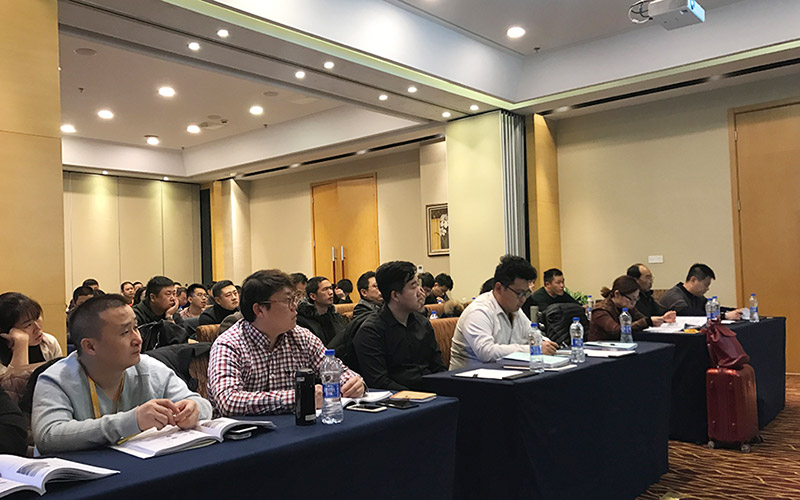The PV industry has a saying: 2018 is the first year of a distributed photovoltaic power plant. This sentence was confirmed in the field of photovoltaic photovoltaic box 2018 Nanjing distributed photovoltaic technology training course! Installers and distributors across the country gathered in Nanjing to systematically learn the knowledge of distributed photovoltaic power plant construction.

As an expert in the field of photovoltaic inverters, Renac has always been dedicated to photovoltaic science. At the Nanjing training site, Renac Technical Service Manager was invited to share the selection of inverters and intelligent services. After class, the students were helped to analyze the common problems of photovoltaic power stations and received unanimous praise from the students.
Tips:
1. The inverter screen is not displayed
Failure analysis:
Without a DC input, the inverter LCD is powered by DC.
Possible Causes:
(1) The voltage of the component is not enough, the input voltage is lower than the starting voltage, and the inverter does not work. Component voltage is related to solar radiation.
(2) The PV input terminal is reversed. The PV terminal has two poles, positive and negative, and they must correspond to each other. They cannot be connected in reverse with other groups.
(3) The DC switch is not closed.
(4) When a string is connected in parallel, one of the connectors is not connected.
(5) There is a short circuit in the module, causing no other strings to work.
Solution:
Measure the DC input voltage of the inverter with the voltage range of the multimeter. When the voltage is normal, the total voltage is the sum of the voltage of each component. If there is no voltage, then inspect the DC switch, terminal block, cable connector, and components in order; if there are multiple components, separate test access.
If the inverter is used for a period of time and no external cause is found, the inverter hardware circuit is faulty. Contact an after-sales technical engineer.
2. The inverter is not connected to the network
Failure analysis:
There is no connection between the inverter and the grid.
Possible Causes:
(1) The AC switch is not closed.
(2) The AC output terminal of the inverter is not connected.
(3) When wiring, the upper terminal of the inverter output terminal is loosened.
Solution:
Measure the AC output voltage of the inverter with the voltage range of the multimeter. Under normal conditions, the output terminal should have 220V or 380V voltage. If not, check if the connection terminal is loose, if the AC switch is closed, and if the leakage protection switch is disconnected.
3. Inverter PV Overvoltage
Failure analysis:
DC voltage too high alarm.
Possible Causes:
Excessive number of components in series causes the voltage to exceed the input voltage limit of the inverter.
Solution:
Because of the temperature characteristics of the components, the lower the temperature, the higher the voltage. The input voltage range of the single-phase string inverter is 50-600V, and the proposed string voltage range is between 350-400. The input voltage range of the three-phase string inverter is 200-1000V. The post-voltage range is between 550-700V. In this voltage range, the efficiency of the inverter is relatively high. When the radiation is low in the morning and in the evening, it can generate electricity, but it does not cause the voltage to exceed the upper limit of the inverter voltage, causing an alarm and stopping.
4. Inverter insulation fault
Failure analysis:
The insulation resistance of the photovoltaic system to ground is less than 2 megohms.
Possible Causes:
Solar modules, junction boxes, DC cables, inverters, AC cables, wiring terminals, etc., have a short circuit to the ground or damage to the insulation layer. The PV terminals and the AC wiring housing are loose, resulting in water ingress.
Solution:
Disconnect the grid, inverter, check the resistance of each component to the ground in turn, find out the problem points, and replace.
5. Grid error
Failure analysis:
The grid voltage and frequency are too low or too high.
Possible Causes:
In some areas, the rural network has not been reconstructed and the grid voltage is not within the scope of safety regulations.
Solution:
Use a multimeter to measure the grid voltage and frequency, if it is out of waiting for the grid to return to normal. If the power grid is normal, it is the inverter that detects the failure of the circuit board. Disconnect all the DC and AC terminals of the machine and let the inverter discharge for about 5 minutes. Close the power supply. If it can be resumed, if it cannot be restored, contact. After-sales technical engineer.